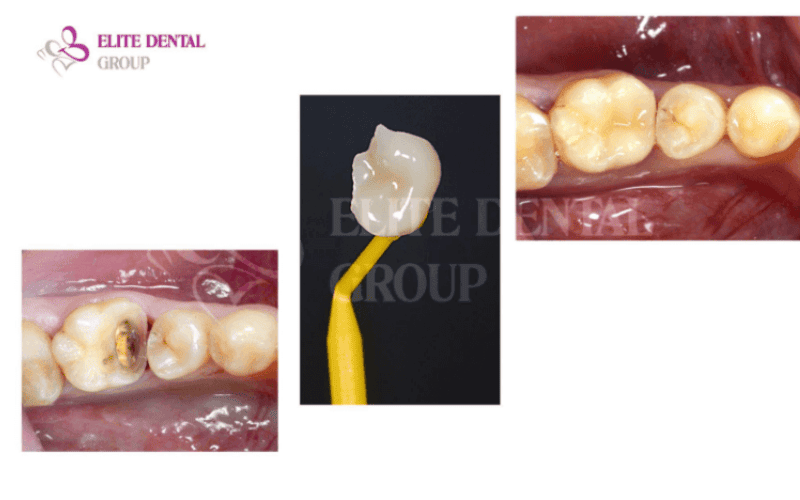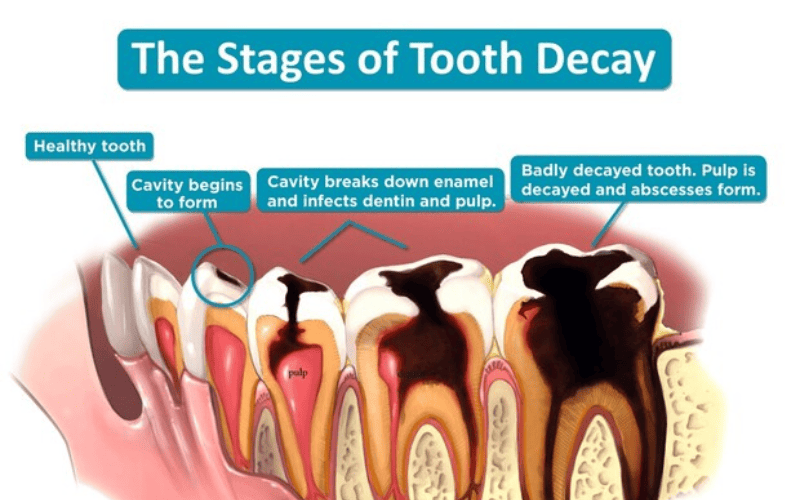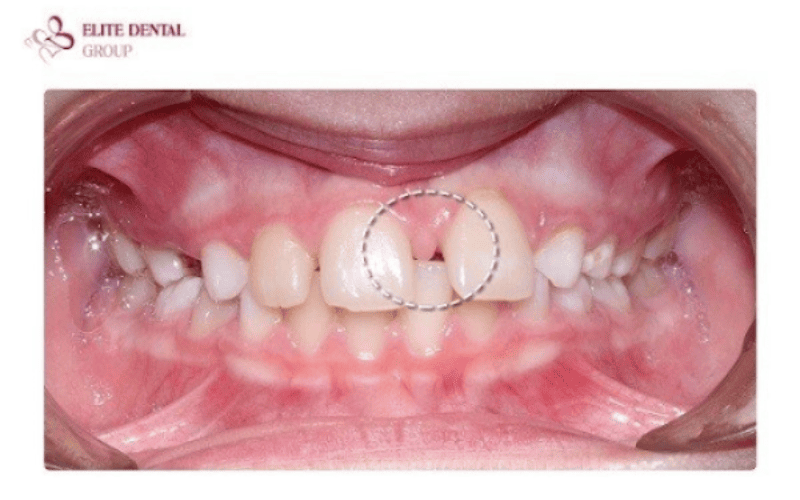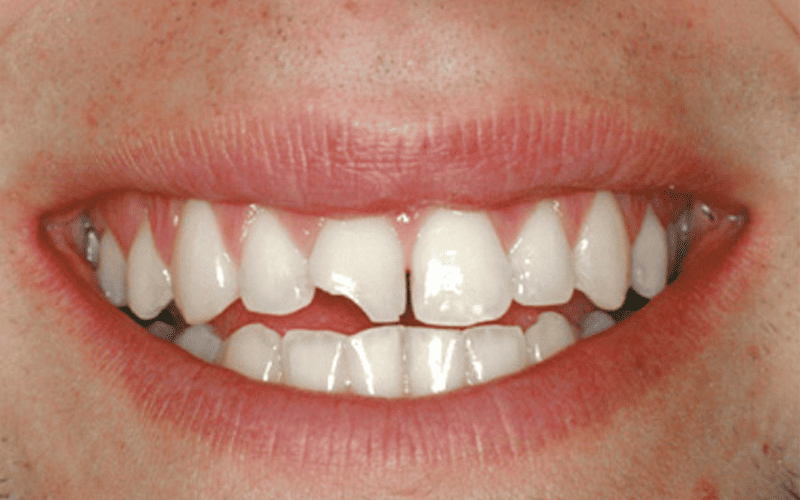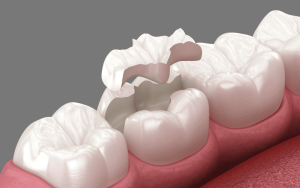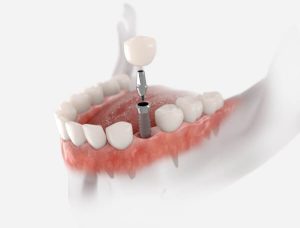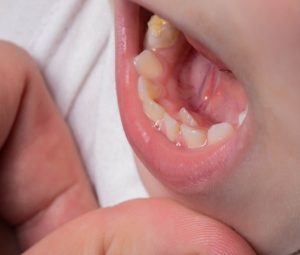Table of content
Dental root filling, also known as root canal treatment, is a dental procedure designed to save a severely damaged or infected tooth. This essential treatment removes infected pulp from within your tooth, cleans the canals, and seals them to prevent further infection. At Elite Dental, our specialists provide expert dental root filling procedures to alleviate pain and preserve your natural teeth.
1. What is dental root filling?
Dental root filling, commonly called a root canal, is a specialized dental treatment that addresses infection or damage affecting the inner pulp of your tooth. This procedure involves removing infected or damaged nerve tissue, cleaning the inner canals, and filling them with biocompatible materials to prevent reinfection. Before exploring the specific details of why you might need this treatment, it’s important to understand what happens when dental pulp becomes compromised.
What is a Tooth Filling? Everything you need to know
1.1 Why do I need a root filling?
You may require a dental root filling for several critical reasons:
- Severe tooth decay has reached the pulp chamber
The stages of tooth decay
- Deep cracks or fractures in the tooth expose the pulp to bacteria
- Repeated dental procedures on the same tooth have weakened its structure
- Trauma or injury has damaged the tooth pulp
- An abscess has formed at the tooth root
- Previous filling is failing or has become compromised
- Prevention of further infection and tooth loss
1.2 What signs indicate I might need a root filling?
Several symptoms may signal the need for dental root filling treatment:
- Pressure hurts when biting down or chewing food
- Tooth pain that doesn’t go away, especially when eating hot or cold foods
Reasons why your tooth hurts when biting
- Swollen, tender gums around the affected tooth
- A pimple-like bump on your gums near the painful tooth
- Swollen jaw around the painful tooth area
- Discolored tooth that appears darker than surrounding teeth
- Loose tooth accompanied by pain or drainage
1.3 How long does it take to recover from a root canal?
Most patients recover quickly after having a dental root filling procedure. The local anesthetic may cause numbness for two to four hours after the procedure. Most patients are able to resume their regular activities within 24 hours, though some minor discomfort may last for a few days. Within a week, the tooth and surrounding tissues typically fully heal.
1.4 What are the potential benefits of a root canal?
Dental root filling offers numerous important benefits:
- Preservation of your natural tooth
- Restoration of normal biting and chewing function
Fill in gaps between teeth
- Elimination of pain and discomfort
- Prevention of costly future dental work
1.5 How much does a root canal cost?
The cost of root filling varies depending on several factors, particularly the complexity of the case and the specific tooth requiring treatment. For example, molars with multiple root canals are more challenging to treat and typically command higher fees. At Elite Dental, we offer competitive pricing for dental root filling procedures:
| Service | Price (USD) |
| GIC Filling (Class 1) | $17.02 |
| GIC Filling (Class 2) | $21.28 |
| Composite Filling (Class 1) | $21.28 |
| Composite Filling (Class 2/3/5) | $34.04 |
| Composite Filling (Class 4) | $38.30 |
| Composite Veneer Filling | $63.83 |
| Pit and Fissure Sealant | $21.28 |
| Inlay/Onlay Zirconia/Cerec | $212.77 |
| Desensitizing Treatment | $8.51 |
| White Spot Treatment (Grade 1) | $85.11 |
| White Spot Treatment (Grade 2) | $127.66 |
| White Spot Treatment (Grade 3) | $170.21 |
| White Spot Treatment (Grade 4) | $212.77 |
| Fluoride Gel Application | $14.89 |
| SSC Crown for Posterior Teeth (Children) | $42.55 |
| SSC Crown for Anterior Teeth (Children) | $63.83 |
Remember that the final cost may vary based on your specific dental condition, whether additional procedures are needed, and your insurance coverage. We recommend scheduling a consultation at Elite Dental for a precise estimate tailored to your needs.
2. What’s dental root filling procedure?
Understanding the dental root filling procedure can help alleviate anxiety before your appointment. Let’s explore what happens during this important dental treatment.
2.1 What happens during a root canal procedure?
- The dental root filling procedure involves several precise steps performed by your dental professional:
- Your dentist administers local anesthesia to numb the area around the affected tooth, ensuring you feel no pain during the procedure.
Effective pain management tips for tooth extraction
- A thin, flexible rubber dam is placed over the infected tooth and surrounding gums to isolate the treatment area and keep it dry and free from saliva.
- The dentist creates a small access hole in the crown of your tooth to reach the pulp chamber.
- Using specialized dental instruments, the dentist carefully removes the infected nerve tissue, blood vessels, and pulp material from inside the tooth.
- After removing the pulp, your dentist thoroughly cleans and disinfects the pulp chamber and root canals to eliminate all bacteria and infection.
- The empty pulp chamber and root canals are filled with a flexible, rubber-like dental material called gutta-percha to seal the space and prevent reinfection.
- A temporary filling is placed to protect the tooth until a permanent restoration can be applied.
- In a follow-up appointment, a dental crown is typically placed over the treated tooth to restore its strength, function, and appearance.
2.2 What happens after a root canal?
After completing your dental root filling procedure, you’ll rest for a few minutes before leaving the dental clinic. Your dentist will provide specific aftercare instructions, but generally, you can expect mild discomfort for a few days. Over-the-counter pain medications are usually sufficient to manage any pain.
Additionally, you’ll need to avoid chewing on the treated tooth until the permanent restoration is placed. Follow-up appointments are essential to monitor healing and place the permanent crown, ensuring the long-term success of your treatment at Elite.
3. Other frequently asked questions
Many patients have questions about dental root filling procedures. Here are answers to some common concerns that may help you better understand this important dental treatment:
3.1 How can I avoid a root canal?
To avoid needing a dental root filling, maintain excellent oral hygiene by brushing twice daily and flossing regularly. Schedule regular dental checkups every six months for early detection of problems. Avoid chewing hard foods that might crack teeth, wear a mouthguard during sports, and address small cavities promptly before they reach the pulp. Studies show that early intervention for dental decay can reduce root canal needs by up to 85%.
Dental filling process at Elite
3.2 What happens if I delay a dental root filling?
Delaying a needed dental root filling can lead to serious consequences. The infection can spread to surrounding tissues, potentially causing an abscess, bone loss, and even systemic infection affecting your overall health. Additionally, the longer you wait, the more likely you’ll lose the tooth entirely, necessitating more extensive and expensive treatments like dental implants or bridges.
3.3 Is a root canal painful?
Modern dental root filling procedures at Elite Dental are virtually painless due to effective local anesthesia and advanced techniques. Most patients report that the procedure feels similar to having a routine filling. The discomfort commonly associated with root canals typically comes from the infection before treatment, not the procedure itself. A survey by the American Association of Endodontists found that patients who have experienced root canals are six times more likely to describe it as “painless” than those who haven’t had the procedure.
Root canal treatment
3.4 Are there risks with a root tip resection?
Root tip resection (apicoectomy) carries minimal risks when performed by qualified professionals at Elite Dental. Potential complications include minor swelling, bruising, or infection, which occur in less than 5% of cases. Nerve damage is rare but possible if the procedure involves teeth near major nerve pathways. Success rates for this procedure exceed 90% when performed by experienced specialists.
3.5 Can I eat and drink normally after the procedure?
After a dental root filling, you should wait until the numbness completely subsides before eating to avoid accidentally biting your cheek or tongue. Initially, stick to soft foods and avoid chewing on the treated tooth until your permanent restoration is placed. Avoid very hot, cold, or hard foods for the first few days. Most patients can return to their normal diet within 24-48 hours, though your dentist will provide specific guidance based on your situation.
Cases requiring tooth filling and the procedure
3.6 Is one root canal session enough, or why is multiple treatment needed?
While simple cases may be completed in a single visit, complex dental root filling cases often require multiple appointments. Factors necessitating multiple sessions include severe infection requiring longer disinfection, complex root anatomy, the need for special medication between visits or the dentist’s preference to ensure complete healing before final restoration. At Elite Dental, approximately 60% of root canal treatments require two visits to ensure optimal outcomes and long-term success.
Don’t let dental pain affect your quality of life. You can contact Elite Dental today to schedule a consultation and discover how our dental root filling expertise can restore your oral health and confidence.

